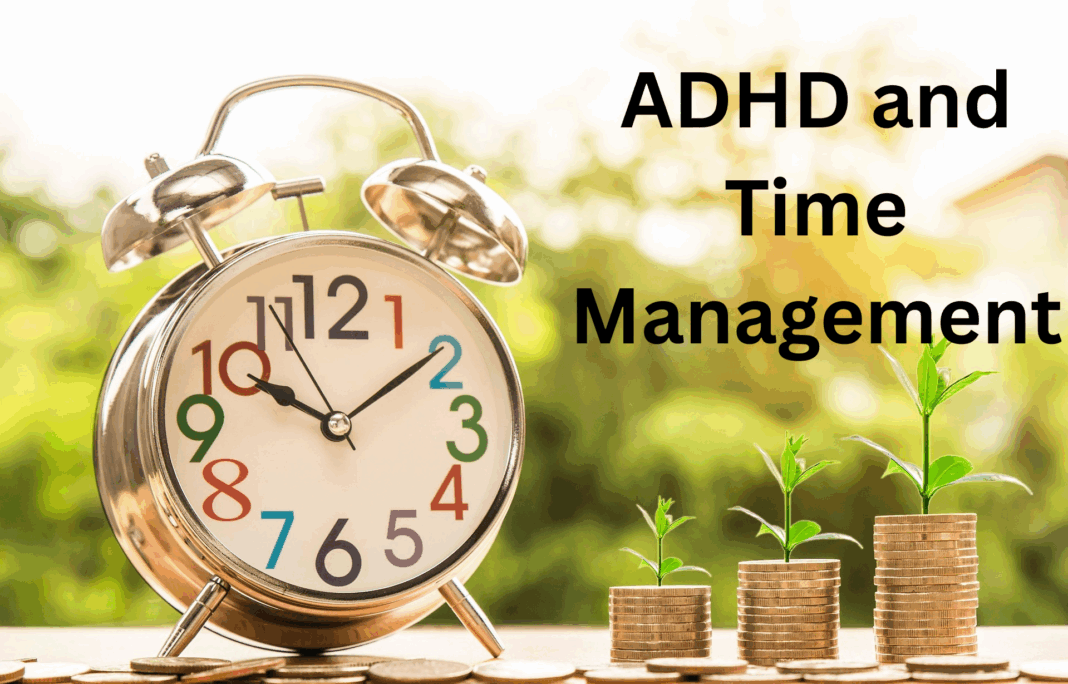Attention-Deficit/Hyperactivity Disorder (ADHD) is a neurodevelopmental condition that significantly impacts an individual’s ability to manage time effectively. Unlike neurotypical individuals, people with ADHD often experience time blindness, chronic procrastination, and difficulty prioritizing tasks. These challenges can lead to missed deadlines, unfinished projects, and overwhelming stress.

However, with structured strategies, ADHD brains can develop systems that enhance productivity. This guide provides deep, actionable techniques backed by psychology, neuroscience, and real-world success stories. Whether you have ADHD or support someone who does, these methods can transform time management from a daily struggle into a manageable skill.
Why ADHD Makes Time Management So Difficult
1. Time Blindness: The Invisible Challenge
People with ADHD often struggle with “time blindness”—an inability to accurately sense the passage of time. This leads to:
- Underestimating how long tasks take (“I’ll just quickly reply to emails” turns into an hour).
- Overestimating available time (“I have all day to finish this” results in last-minute panic).
- Missing transitions (losing track of time and being late for appointments).
Neurological Explanation:
Research from The Journal of Neuroscience (2021) found that ADHD brains have weaker connectivity in the default mode network (DMN), which regulates internal time perception. This means external tools (timers, alarms) must compensate.
2. Executive Dysfunction: The Planning Struggle
Executive functions (planning, prioritizing, initiating tasks) are often impaired in ADHD. Key issues include:
- Task Initiation Paralysis – Knowing what to do but struggling to start.
- Poor Working Memory – Forgetting steps in a process.
- Difficulty Switching Tasks – Getting stuck hyperfocusing on one thing.
Solution: Externalizing thoughts (writing lists, using apps) reduces cognitive load.
3. Procrastination & the ADHD Brain
Procrastination in ADHD isn’t laziness—it’s an emotional regulation issue. The brain avoids tasks that feel boring, overwhelming, or unrewarding.
The ADHD Procrastination Cycle:
- Task feels daunting → Avoidance → Short-term relief.
- Deadline approaches → Panic → Rush to finish.
- Stress reinforces avoidance in the future.
Breaking the Cycle:
- The 5-Second Rule (Mel Robbins): Count down from 5 and physically move toward the task.
- Temptation Bundling: Pair a disliked task with something enjoyable (e.g., listening to music while cleaning).
Proven Time Management Strategies for ADHD
1. The Pomodoro Technique (Modified for ADHD)
The classic Pomodoro method (25-minute work, 5-minute break) can be adjusted:
- Shorter Intervals: 15 minutes work, 3 minutes break (better for ADHD attention spans).
- Movement Breaks: Stretch, walk, or fidget during breaks to reset focus.
- Visual Timer: Use a Time Timer (shows time elapsing in red) for better awareness.
Study: A 2022 Journal of ADHD Research study found modified Pomodoro improved task completion by 58% in ADHD adults.
2. Time Blocking: Structuring the Day Visually
Instead of vague plans (“I’ll work on the project later”), assign specific time slots.
How to Implement:
- Morning: High-focus tasks (writing, coding).
- Afternoon: Meetings, emails (lower mental energy).
- Evening: Wind-down routine (no work after 8 PM).
Tools: Google Calendar (color-coded), Sunsama (task scheduler).
3. The “Two-Minute Rule” for Small Tasks
If a task takes less than two minutes (reply to an email, put dishes away), do it immediately. This prevents small tasks from piling up.
4. Body Doubling: Using Accountability for Focus
Working alongside someone (even virtually) increases motivation. Options:
- Focusmate: Schedule coworking sessions with strangers.
- Study Groups: Virtual ADHD accountability groups.
- In-Person Buddy: A friend who sits with you while you work.
Why It Works: External pressure overrides executive dysfunction.
Best Tools & Apps for ADHD Time Management
1. Digital Planners (Better Than Paper for ADHD)
- Trello: Drag-and-drop task boards.
- TickTick: Combines to-do lists with calendar blocking.
- Notion: Customizable workspace for projects.
2. Focus Apps to Reduce Distractions
- Forest: Grow virtual trees by staying focused.
- Cold Turkey Blocker: Locks distracting websites.
- Freedom: Blocks apps across all devices.
3. Smart Alarms & Reminders
- Google Keep: Location-based reminders (“Buy milk when near grocery store”).
- Due (iOS): Persistent reminders that nag until completed.
FAQs: ADHD & Time Management
Q: Why do ADHD brains procrastinate even when they know the consequences?
A: ADHD procrastination is not laziness—it’s a neurological struggle with task initiation. The brain prioritizes immediate rewards over long-term consequences.
Q: Do ADHD medications fix time management issues?
A: Medication helps focus, but behavioral strategies are essential for long-term improvement. Think of meds as glasses—they help, but you still need to learn to read.
Q: How can I remember appointments and deadlines?
A: Use multiple reminders (phone alarms, sticky notes, calendar alerts). Assume you’ll forget unless it’s externally tracked.
Conclusion: Building a Sustainable ADHD-Friendly Routine
Managing time with ADHD requires external systems to compensate for executive dysfunction. Key takeaways:
- Use timers to combat time blindness.
- Break tasks into micro-steps to reduce overwhelm.
- Leverage body doubling for accountability.
- Experiment with apps to find what works for your brain.

